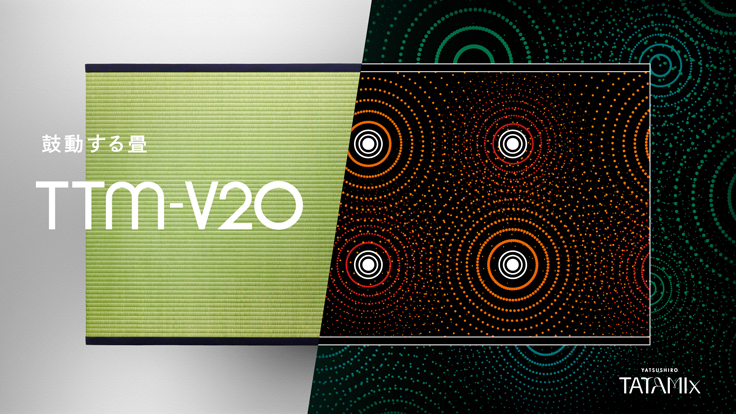
Don’t just listen to music; feel it with your body!
Tatami mats are a unique aspect of Japanese culture. Made of woven straw, filled with a soft material (traditionally rice straw, but nowadays foam), and bordered with beautifully-patterned cloth, these mats are what make up the floor of a traditional Japanese-style room, which is called a washitsu in Japanese.
Sadly, for one reason or another, tatami mats are widely falling out of use in most Japanese homes. This has also resulted in a decline in the demand for common rush, the reed-like plant that is used to make the woven surface of tatami mats, known as tatami-omote. With a decline in demand comes a decline in price, which means the rush industry is also in danger because fewer farmers are willing to grow it. Because of this, the tatami industry could disappear altogether. In fact, the number of tatami-omote produced in Japan has declined by 95 percent since its heyday at the beginning of the Heisei period (1989).
But one organization is trying to change that. The Association for the Improvement of Awareness of and Demand for Yatsushiro Tatami Mats is conducting an “open-innovation” project to promote the revival of the tatami industry in Yatsushiro City, which is located in Kumamoto Prefecture in southwest Japan. Yatsushiro is where 99 percent of Japan’s common rush is cultivated and 99 percent of the woven surfaces of Japan’s tatami mats are produced, so they have a vested interest in the cause.
Their venture is called the “Yatsushiro Tatamix Project,” and it’s a multi-stage enterprise focused on developing completely original tatami products that will help restimulate interest in tatami. They’ve just embarked on stage one! In collaboration with the Japan Acoustic Lab, which specializes in the analysis of voice and sound, they’ve released the TTM-V20, a “pulsing tatami mat” outfitted with six vibration speakers so that, when music or sound is playing through them, the whole tatami mat vibrates. While you relax upon it, you can listen to music and feel its good vibrations all throughout your body!
This unique tatami mat, which is more like a platform with a tatami-omote atop it, is the ideal “gorone” (“dozing”) spot: the best place to lay about while you scroll, read, watch movies, nap, or just relax. Its name comes from “TTM” for “tatami”, “V” for “vibration”, and 20, the value representing the lowest frequency humans can hear (20Hz); in other words, the borderline between sound and vibration.
Humans typically detect sound by sensing frequencies through their eardrums, but the TTM-V20 allows you to feel the vibrations of music with your very body. Depending on the part of your body, you experience the frequencies differently, and the Japan Acoustic Lab has taken that into account when designing the speakers as well. This mat has been created with the ultimate sound experience in mind!
The TTM-V20 can have many purposes, according to the makers. It would make an excellent addition to a spa or bathhouse, for example. Lying on one and listening to calming music after a nice soak in a hot bath or a stint in the sauna would amplify your sense of relaxation.
It would also be great for music festivals and concerts. Its ability to produce vibrations through the beat and through extremely low-frequency sounds provides an amplified musical experience like no other. It could be another way for artists to engage their fans, and offers an additional tool through which to exercise their creativity.
Or it could really augment a movie-watching experience. With high-quality sound systems embedded into the mat, you can not only listen to the crystal clear sound, which is linked to the emotion of the story, but also feel the music in your very core. By using headphones as well as the speakers of the mat, your experience of the sound becomes even more intense! It could provide a whole new movie-viewing experience.
The TTM-V20 will make its debut at the popular Mori Michi Ichiba festival in Gamagori, Aichi prefecture, a sound, food, and craft festival that will be held from May 27 to 29. There it will be combined with a foot bath and will be playing sounds of the ocean, providing an all-new relaxation experience.
Otherwise, it’s not available for purchase on the general market and thus has no price listed, but contact information is available through the project’s website for those who might want to feature it at their event or venue. If you’re looking to add a little taste of tatami to your own home, consider this versatile and inexpensive option. It doesn’t have built-in speakers, but it’s a great way to incorporate tatami without dedicating a whole room to it!
Source, images: @Press
● Want to hear about SoraNews24’s latest articles as soon as they’re published? Follow us on Facebook and Twitter!